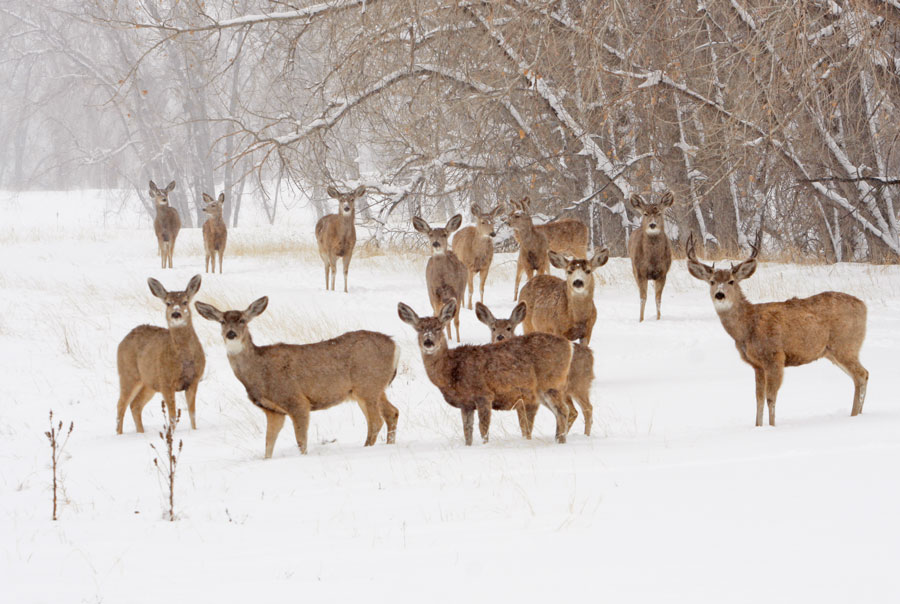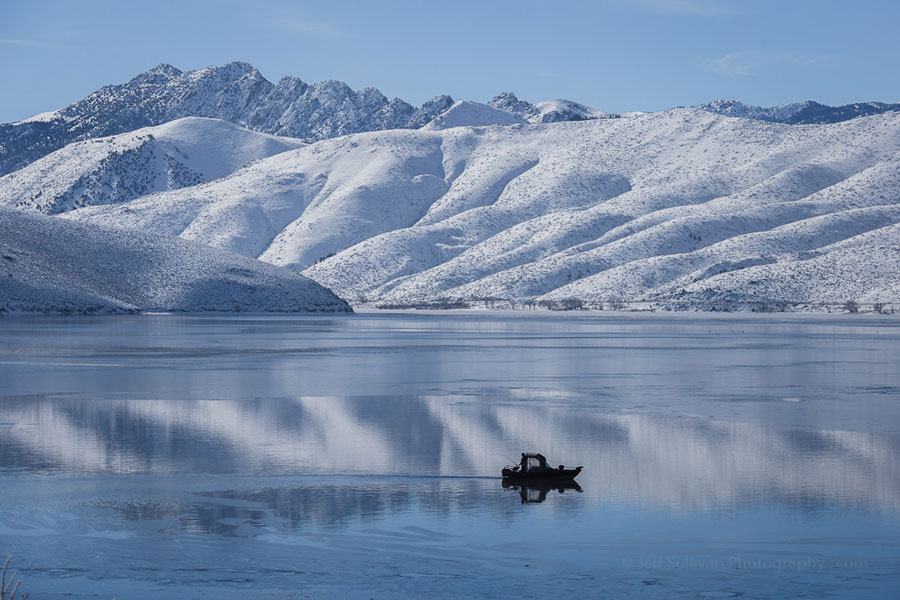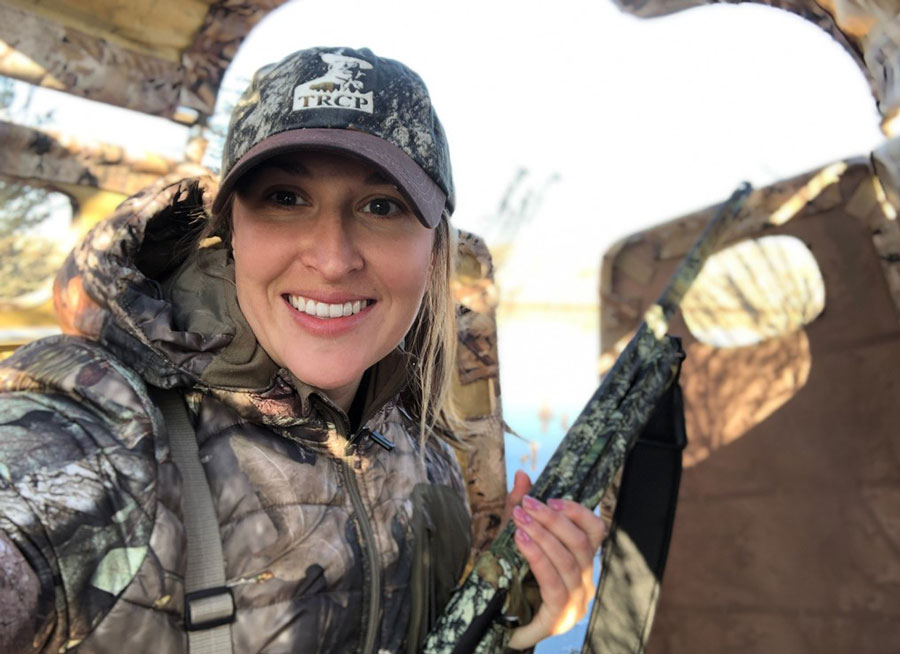Here’s how Congress will fund conservation in 2020
Every year, Congress must decide how federal funds will be divided among virtually every agency and program, from defense to medical research, federal highways, and conservation. This process of appropriations reflects which issues are most important—or have the broadest appeal—in our country.
At the end of 2019, the passage of H.R. 1865 showed that conservation remains a bipartisan priority for lawmakers. With generally strong numbers across the board, this spending bill for Fiscal Year 2020 reinvests our tax dollars into programs, research, and federal agencies that are essential to hunters’ and anglers’ enjoyment of America’s natural resources.
You’re probably not going to want to read H.R. 1865, which weighs in at over 1,700 pages, but here are a few highlights that sportsmen and women should celebrate.
Empowering State Wildlife Agencies to Invest in the Future of Hunting
H.R. 1865 included more than just monetary investments in conservation – The appropriations package also included the Modernizing the Pittman-Robertson Fund for Tomorrow’s Needs Act, which gives state wildlife agencies the ability to use tax dollars they receive through firearm, ammunition, and archery equipment sales to recruit, retain, and reactivate hunters. This flexibility is critical to preserve and grow hunting in the United States and, in turn, to uphold and strengthen the North American Model of Conservation. TRCP and our partners have long advocated for this change, and its permanent passage is a landmark conservation achievement for this Congress.
Support for Clean Water and Place-Based Conservation
Congress also made substantial investments in water quality and the recovery of aquatic ecosystems. WaterSMART, which stands for Sustain and Manage America’s Resources for Tomorrow, is a critical initiative by the Bureau of Reclamation to ensure that Western states have access to safe, reliable, and well-managed water supplies. At the insistence of TRCP and our partners, Congress boosted funding for WaterSmart to $55 million – a $20 million increase – which will support projects that conserve water, increase efficiency, prevent further decline and accelerate the recovery of species, and address climate-related impacts of the water supply essential to maintaining healthy communities and ecosystems. Additionally, in response to the increased threat of water shortages, Western watersheds received further relief by way of $20 million allocated specifically for drought response.
EPA Geographic Programs, which are used to protect and restore some of America’s most iconic waterways and ecosystems, also saw an increase in funding bringing them to a total of $85 million, including a $12 million increase for the Chesapeake Bay Program. Funding for this program comes at a crucial time: last year the health of the Bay continued its slow decline, alarming ecologists, sportsmen and women, and communities whose economy relies upon the health of the waterway.
Strengthening Public Lands Funding
The Land and Water Conservation Fund (LWCF), one of the most celebrated federal conservation programs, received a substantial plus-up in funding through H.R. 1865 to a sum of $495 million. While this certainly counts as a big win for FY20, looking ahead the larger aim should be to remove LWCF from the back-and-forth of the appropriations process entirely. Now that Congress has authorized the program permanently, it needs mandatory funding to ensure its continued status as one of the United States’ signature conservation measures.
In addition to LWCF, the National Wildlife Refuge System was funded at $502 million, just $1 million shy of its high-water mark set in FY10. Among other benefits, the bump in support includes additional resources for the upkeep of refuge facilities and equipment, invasive species control, and increased law enforcement efforts across the refuge system.
CWD Funding: A Step in the Right Direction
In the 116th Congress, sportsmen and women have turned up the pressure on lawmakers around another critical issue: addressing the spread of chronic wasting disease in wild deer, elk, and moose populations. But while hunters successfully pushed Congress to reinstate funding to support CWD research and testing after a multi-year lapse, the amount appropriated, just $5 million, falls far short of what is needed to effectively monitor and combat this disease across the 26 states where it has been detected.
Despite this missed opportunity for a more robust response to CWD, the FY20 appropriations bill did include new funds for the U.S. Fish and Wildlife Service to monitor the spread of the disease and study the effectiveness of testing methods. Appropriators also allocated funds for a study on the transmission of CWD and testing methods for the disease that will be conducted by the National Academies of Science in partnership with the USDA’s Animal and Plant Health Inspection Service and the U.S. Geological Survey.
The Cycle Continues: FY21
While Congress made many strong investments in conservation in the FY20 bill there is, as always, room to grow going forward.
Though appropriators funded the National Wildlife Refuge System at a near-historically high level, the conservation community encourages Congress to make an even more robust investment in the system in the FY21 budget. Without a larger investment, federal wildlife officers will remain spread thin, certain facilities and roadways will remain in a state of disrepair or closure, and Americans will have reduced access to and enjoyment of the refuge system. TRCP, as a member of the Cooperative Alliance for Refuge Enhancement (CARE), requested $586 million to fully support these initiatives, meaning there’s room for this funding line to be improved upon in the next appropriations bill.
In addition to improving baseline funding levels to combat CWD in the next appropriations bill, Congress should pass the Chronic Wasting Disease Management Act, introduced in the House by Congressman Ron Kind (D-Wis.) and Congressman Jim Sensenbrenner (R-Wis.), and in the Senate by Senator Jon Tester (D-Mont.). This bill would establish a comprehensive, multi-state and tribal grant program to provide funding to agencies and communities on the frontline of this wildlife health crisis by allocating $35 million annually to state and tribal fish and wildlife agencies, along with an additional $10 million to support research grants to study and develop improved management practices to help curb the disease.
Lastly, it remains imperative that Congress continues to at least maintain funding levels for conservation programs across the board. Responsibly managing and safeguarding our land, water, and wildlife is an ongoing project – not just a one-off purchase or investment – and future generations are relying upon us to make it a priority.
TRCP and our partners are already working with lawmakers to set the stage for another strong budget in the next fiscal year.








I wish that congress would separate fire fighting funding from land agencies. a many of fire are on multi agencies. and funding for fire fighting drains the funding from many projects.
If sustaining wildlife, including wild horses and if recreation is the goal why is the Forest Service allowed to fence off the Salt River in the Tonto National Forest so people don’t have access to the River? Why is the FS allowed to fence off 40% of the habitat of the Salt River Wild Horses who are protected by state and federal law? Too many chiefs in control and not enough communication between them. I’m happy you got something, but there’s a lot of species who didn’t!!
Currently, there are approximately 500 horses in the Tonto National Forest’s Lower Salt River Recreation Area. These horses are being artificially fed to prevent mass starvation as the horses have over-grazed the area of all its natural forage. The horses have cost the public approximately $5.614 million since the Arizona Department of Agriculture entered into a management agreement with the Forest Service in December 2017 as the result of A.R.S. 3-1491 sponsored by Rep. Kelly Townsend and signed by Governor Ducey.
Two dozen horses have been killed in motor vehicle collisions since December 2017. Miraculously, no motorists have died though one young woman has been brain-damaged for life as the result of a horse running in front of her motorcycle.
One nearby rancher has suffered almost $4,000 in damage to his property when starving horses broke through his fencing in search of food.
Another nearby guest ranch operator has been struggling with Salt River horses breaking through their fences to get into their hay barn and with their clients’ rides being disrupted by Salt River horses. These are overpopulated feral horses,,,
The Trump administration (Andrew Wheeler, coal lobbyist head of EPA, David Bernhardt, oil and gas lobbyist head of Interior, William Pendley, “all federal lands should be sold” head of BLM) has not been kind or helpful to our environment. They have been gutting environmental protections left and right. Some of these short term may look good, their long term attacks on our environment are beyond bad. We need people in these positions who genuinely care about our environment and these are not it.
Indeed, Murray! Couldn’t have said it better myself. We really need real conservation heroes in these positions. People like Zinke and Pruitt were the exact opposites of who should have been in charge, and both had to step down in shame. Time for true conservation minded activists to step up and take these jobs to protect our wildlife and our environment.
Instead of empowering people in the future of hunting we should be empowering people in the future of conservation and preservation. Killing is NOT conservation. Hunting is not the only funding, in fact, we are in dire need of a New Guard of conservationists who promote non-consumptive funding. All trapping and fur sales should be banned as we enter a new age of compassion and true conservation. Fur trapping is cruel and barbaric and has absolutely ZERO to do with conservation. The Fish & Wildlife Agencies need more non-hunter members, people who genuinely care about our environment, our wild habitats and the lives contained therein, who do not look at it solely as a “sport” to take and use. The Trump administration is no friend to wildlife or the environment. We will see long term suffering from many of the horrid decisions these big oil men have made. True conservationists must work together, and work harder, to protect our national treasures, our wildlife.